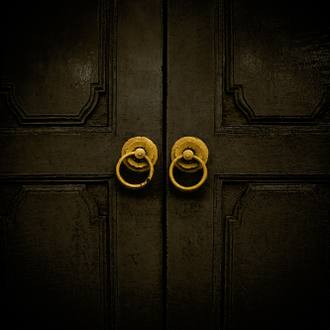What type of materials should I choose for my doors?
Index
If you are thinking of buying new doors, for a renovation project or if your building a new home, there are now many different materials and types to choose from.

When choosing the material for your new doors, you will need to consider things like:
- The purpose of the door
- The decor or style of the surrounding room or area
- Your budget
- And your own personal tastes.
Solid core wooden doors
Solid core wooden doors are heavily constructed doors which are made from whole pieces of timber, although rarely from one single piece. These doors are most commonly used as front and back entrance doors, or where security or insulation from noise or temperature is important. Solid core doors are popular for use in home theatres or to separate two ends of a house into zones.
Hollow core doors
Hollow core doors are generally constructed from a mixture of pressed word panelling and solid wood pieces, often with some form of cellulose of cardboard providing insulation within the core. They are lighter and cheaper than solid core doors and are best used for internal doors. Hollow core doors do not provide security and give little in the way of temperature or sound insulation; their principal benefit is one of cost.
Glass doors
Glass doors look great and can provide strength and insulation and even privacy, given the proper treatment. The quality of construction of your glass door is very important in this respect and should be assessed carefully if intended for use as an entrance door. Mirrored doors are lightweight reflective glass over wood, and are used generally only in internal doors and primarily for sliding wardrobe doors.
Steel doors
Steel provides the strongest possible material for doors and underlies its use in the construction of security doors and grilles as well as fire doors. Steel doors are a popular choice for street level and stairwell doors.
Aluminium doors
Aluminium is a substitute for steel in the construction of security doors and is also commonly used for garage and similar roller doors. Aluminium has no temperature insulating properties however, and will act rather as a conductor of heat and cold. Aluminium is also commonly used as a window and glass door framing material.
Leadlight and stained glass doors
Together with steel, the most expensive door construction material – stained glass and leadlight inserts in doors can be very attractive decorative additions to period and even modern homes. As with plain glass doors, the security and insulation aspects of the door will be directly related to their quality of design and construction.
Fibreglass doors
Once only seen in marine fittings, fibreglass doors are becoming increasing popular for non-marine applications. Fibreglass is an excellent material for external door construction, as it offers waterproofing and security, together with noise and temperature insulation.
In the end, you have to go with what you like the most. It might be all well and good for magazines or architects to recommend an art deco door for the front door of your new house – but if you hate stained glass, you’re never going to be happy with that kind of door. You’re better off balancing the recommendations of the professionals with your own taste and preferences. After all, you’re going to be looking at those door for a long time.
